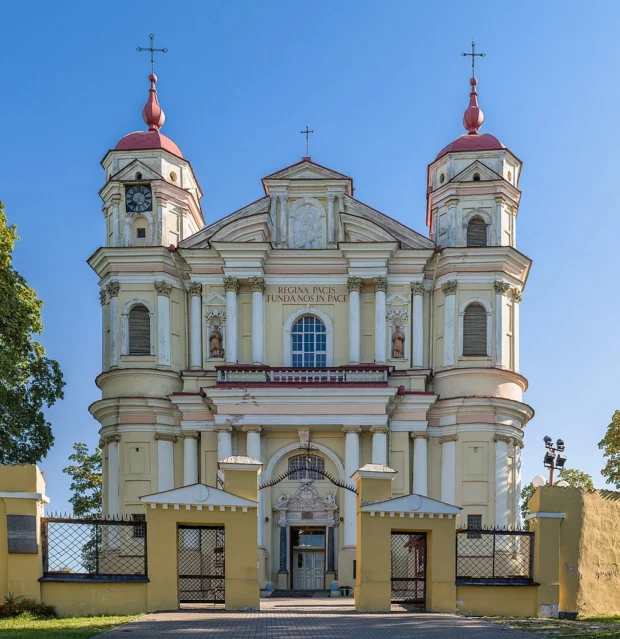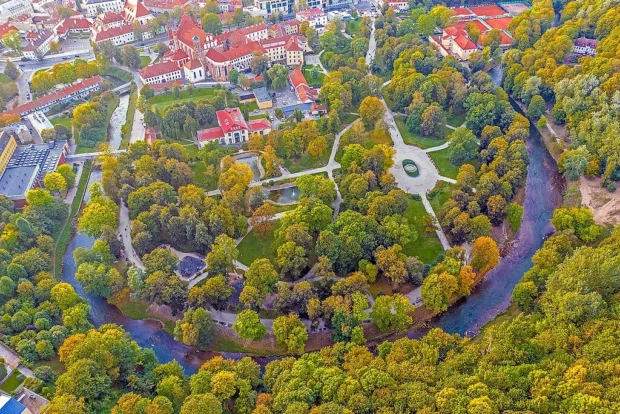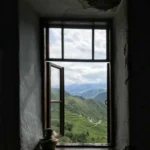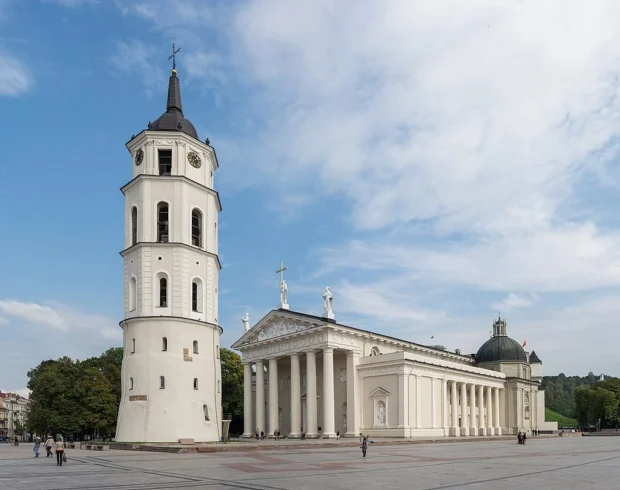Vilnius is not a city many people know well. But it holds stories, colors, and surprises that often go unnoticed. Nestled in Lithuania, this place tells tales through old buildings, lively markets, and quiet corners where time feels different. If you are curious about places where history meets daily life, Vilnius offers a kind of charm that grows the more you look. Let’s wander through its streets, find moments worth keeping, and talk about what makes this city a unique stop on any traveler’s map.
Table of Contents

Tracing History in Vilnius’ Past and Architecture
Walking in the Old Town of Vilnius feels like stepping back several centuries. The narrow, winding roads are lined with buildings that wear their history openly, with peeling walls and colorful facades. The Vilnius Cathedral, standing proudly at Cathedral Square, is not just a religious center but a symbol of the city’s long and often difficult story. While there, you might notice the bell tower set apart, almost inviting a second glance. Nearby, the Palace of the Grand Dukes holds echoes from Lithuania’s time as a mighty kingdom.
If intrigued by Vilnius’ blend of history and charm, you might enjoy reading about Heidelberg’s peaceful old town and castle views, which offer a similar quiet, historic atmosphere.

But history is not only in grand monuments. There is a quiet street called Užupis, once home to artists and now a declared “republic” within the city. It has its own constitution – half serious, half playful – reminding visitors that culture can be both deep and fun. This neighborhood offers a vast contrast to the solemn churches, showing Vilnius’ layers of identity.

Markets and Culinary Traditions in Vilnius
One of the best ways to understand a city is through its markets. The Hales Market Hall is a lively place where colors, smells, and sounds mix. You will find fresh vegetables, smoked meats, cheeses, and an array of spices. It’s a spot where locals shop and chat, giving you a closer look at daily life. Don’t miss trying cepelinai, a famous Lithuanian dish made of potato dumplings filled with meat or mushrooms. People say no visit to Vilnius is complete without tasting this hearty dish. You can find it in eateries around the city center or in the more relaxed neighborhoods like Šnipiškės.

Speaking of neighborhoods, if you want to stay somewhere close to action but with a quieter pace, many travelers choose areas along the Neris River. These offer easy walking routes to cafes and parks, while still feeling tucked away. Public transport in Vilnius is quite reliable; buses and trolleybuses cover most parts of the city. To get from the airport to the city center, city buses run frequently and are a straightforward choice, affordable and easy to use.
For those interested in the Baltic vibe, Riga in Latvia shares its own blend of historic streets and lively local traditions.

Local Customs and Culture: Things to Know
Lithuanians are polite and reserved but warm once you start talking. It is polite to greet people with a simple “Labas” (hello). When visiting religious places, dress modestly and keep voices low. Unlike some large cities, you might notice fewer smiles on the street at first; this is just part of the local style, not rudeness. Waiting in line or speaking calmly is respected here – pushing ahead is frowned upon.

Another interesting custom is that Lithuanians respect their traditions strongly. Celebrations like Joninės (Midsummer) blend pagan and Christian beliefs, creating a festive atmosphere that includes singing, dancing, and jumping over bonfires. If your visit aligns with such events, you’ll find the city’s spirit shines brightest. Also, gift-giving is common during visits, especially something handmade or local, which shows appreciation deeply.

Unexpected Stories and Little-Known Corners
Vilnius is full of stories that rarely make guidebooks. Like the legend of the Iron Wolf, which is part of the city’s founding myth. A duke dreamed of a wolf howling on a hill, which led to the city’s name and location. Statues and murals throughout the city remind visitors of this tale.

If you want to step away from the usual landmarks, try walking along the Vilnia River early in the morning. The fog over the water creates a soft, almost magical scene rarely seen later in the day. Nearby, the Bernardine Gardens provide calm after the city’s buzz. Another oddity is the “ghost signs” – faded advertisements painted on old walls, telling stories of businesses from different eras. It’s like reading whispers from the past.

Getting Around Vilnius and Practical Advice
Vilnius is compact but full of hills and stairs, so wear comfortable shoes. The city’s public transport system is simple: buy a ticket at a kiosk or use a travel app, then board any bus or trolleybus. Whether heading to a distant museum or a small café, it’s easy and cheap.

If you arrive by train, the central station connects well with both the bus and city center. The airport is about 6 kilometers from downtown, and city buses connect it smoothly to all main areas. Walking is also a joy, especially in the Old Town, where every corner offers a new view or a small café terrace to rest.

Vilnius Through Local Eyes: A Personal Reflection
On my trip, I chatted with a craftsman who makes traditional Lithuanian ceramics. His workshop was tucked in a quiet alley lined with old wooden houses. He showed me how patterns in his pottery tell stories of seasons and family traditions. These crafts speak silently but strongly across time. It felt like holding a piece of the city’s soul.

One evening, I sat in a simple café with a group of locals watching a folk music performance. They sang songs in voices full of history and emotion. You realize then that Vilnius is not just about buildings or museums; it’s about people and their connection to land, past, and each other. It’s a place where history doesn’t gather dust but breathes alongside everyday life.

So, if your path leads to Vilnius, bring curiosity more than a schedule. Let the city’s layers unfold naturally, and you might find yourself happily caught in its quiet, honest spell.



Eastern Europe travel specialist uncovering hidden gems from the Baltics to the Balkans.
- Vilnius Cathedral Exterior 2, Vilnius, Lithuania – Diliff by Diliff on Wikimedia Commons – cc by-sa 3.0
- View of the Vilnius Old Town from the Observation Tower of the Palace of the Grand Dukes of Lithuania (2) by Pofka on Wikimedia Commons – cc by-sa 4.0
- Gediminas Tower (05.09.2022).02 by Nenea hartia on Wikimedia Commons – cc by-sa 4.0
- Vilnius – Cathedral 01 by Lestat (Jan Mehlich) on Wikimedia Commons – cc by-sa 3.0
- 'The Angel of Užupis' Vilnius (5993391627) by FaceMePLS from The Hague, The Netherlands on Wikimedia Commons – cc by 2.0
- Gate of Dawn Exterior, Vilnius, Lithuania – Diliff by Diliff on Wikimedia Commons – cc by-sa 3.0
- Museum of Genocide Victims, Vilnius, April 2015 (16) by Ardfern on Wikimedia Commons – cc by-sa 3.0
- Lithuania Vilnius Presidential Palace 3 by Wojsyl on Wikimedia Commons – cc by-sa 3.0
- Les églises St-Anne et St-François des Bernardins (Vilnius) (7670908128) by Jean-Pierre Dalbéra from Paris, France on Wikimedia Commons – cc by 2.0
- St. Peter and St. Paul's Church Exterior, Vilnius, Lithuania – Diliff by Diliff on Wikimedia Commons – cc by-sa 3.0
- Bernardinu sodas by Augustas Didzgalvis by BigHead on Wikimedia Commons – cc by-sa 4.0
- Vilnius.Lietuvos nacionalinis muziejus by Algirdas on Wikimedia Commons – cc by-sa 3.0
- Palace of the Grand Dukes of Lithuania and Gediminas Monument, Vilnius by Pofka on Wikimedia Commons – cc by-sa 4.0
- Laisves by Augustas Didzgalvis by Augustas Didžgalvis on Wikimedia Commons – cc by-sa 4.0
- The three crosses from Gediminas 01 by Averater on Wikimedia Commons – cc by-sa 3.0
- Vilnius University M. K. Sarbievijus Courtyard, Vilnius, Lithuania – Diliff by Diliff on Wikimedia Commons – cc by-sa 3.0
